Winter Carp Fishing
Many anglers pack the carp rods away once the leaves start dropping and the first frosts hit, but by picking the right times and location there’s no reason why you shouldn’t carry on carping through the bleakest months – Rob Harris shares his tips for winter carp fishing.
Getting it right – you can catch in winter
In reality carp are to be caught throughout autumn and winter, so rather than sitting at home, convincing yourself that you will only blank, read on and prepare to bank plenty of cold weather carp. First things first. There are several magic keys that will unlock winter carp success and you’ll need all of them. Stick to a few basic principles, be prepared and keep your confidence high and you’re sure to succeed, so here they are:
The right mindset:
On the right day when the conditions turn mild you’ll fill your boots – but it won’t always be that easy. Mentally ready yourself for long gaps between bites, blank sessions and simply staring at the water and wondering if there are actually any fish in there. Prepare yourself for the worst and the best will take care of itself, becoming ever more rewarding the harder conditions become.
The right gear for winter carp fishing:
This might seem obvious but if you ain’t there you ain’t going to catch. If you’re cold and miserable you won’t be there. October through to the end of November can be incredibly mild but, by the time December hits it’s more than likely going to be much colder, possibly frosty and down to negative temperatures. Make sure you pack the right kit to keep warm, dry and comfortable. In days gone by we didn’t have clothing or accessories anywhere near the standard available now and had to make do with wrapping up in as many layers as possible and, in the end, just sticking it out. In modern times, though, things have moved on. Thermal clothing really is at a different level, with suits, sleeping bags and shelters to suit all conditions, meaning there’s no excuse to be cold on the bank.
The right lake:
While there’s a temptation when the fish are reaching peak weights to go target ‘the beast’ in your big ticket water, realistically speaking if it’s low stocked, bites are going to be very hard to come by and you could waste an awful lot of time without much success. Cold water carping is about having fun, getting some bites and pushing your carp fishing further than you might normally. Pick a venue with a good head of stock, plenty of doubles and 20’s with maybe just a few 30’s and a 40 thrown in for good measure.
In winter I also avoid overly deep waters – 12ft and more on average – as, firstly, in such depths it can be hard to determine at what level the carp want to sit and, secondly, deep waters, once they get cold, stay cold.
Dark and sheltered, there aren’t enough hours of sunlight in the day to warm them up and the carp in these waters can really shut down and hibernate for the colder months, sinking themselves in the silt until the rays of spring break through and reinvigorate the lake into life.
Shallow waters, those that range from 3ft to 10ft, while getting cold faster, also get warm faster and four or five hours of daylight in the shallow snaggy areas can be enough to get the carp feeding. You may also find the majority of the stock gathered in a single area of the lake.
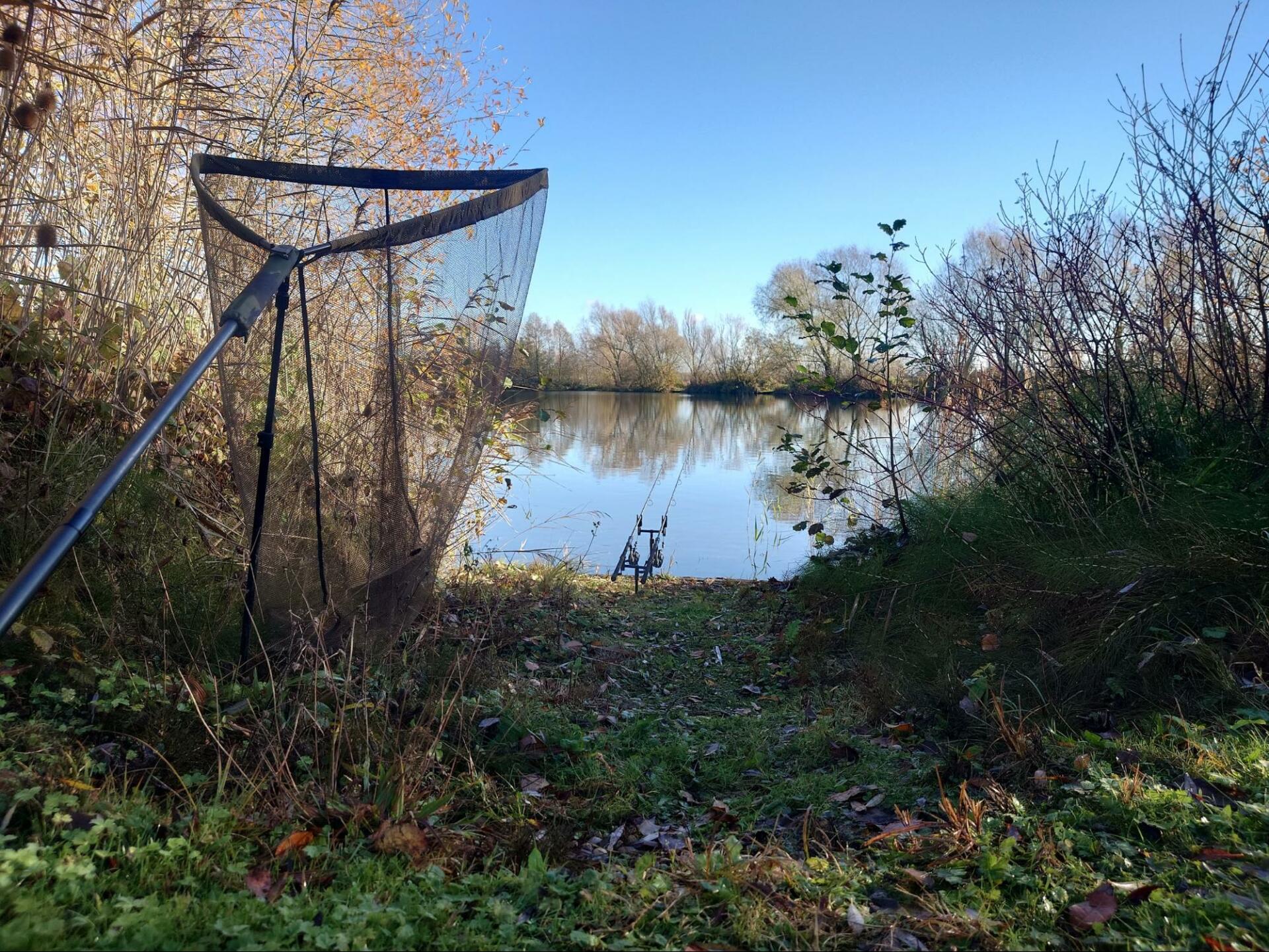
Pick a venue with a good head of stock, plenty of doubles and 20’s with maybe just a few 30’s and a 40 thrown in for good measure.
The right location – do your homework:
As mentioned above, we’re going to have to be vigilant and stay mobile to catch these carp in the cold and it’s vital to find the areas I mentioned as this will be the difference between catching and blanking. It pays to do your homework at any time of year, but now more than ever. While I would still say first light can be worthwhile, last light is definitely key here.
After a full day of sunshine you can see the carp moving in the shallower, warmer areas. As an added bonus it’s dark by four or five o’clock in the afternoon so you can do a recce and still be home for dinner too!
Wrap up warm, take a little flask and your binoculars and walk round the whole lake, paying particular attention to corners and bays that have seen the most sunshine during the day and any bank on the back of or on the end of prevailing winds. As a rule of thumb, if the wind is warm you’ll probably find them on the end of it. If it’s a bitter cold wind on a clear winter’s day it could be the opposite, the fish hiding away at the back of it. However, they could be anywhere. I’ve learned over the years that, sometimes, fish just want to be where they want to be, for no reason at all or certainly no reason we, as anglers, can see.
Keep your eyes open for crashing fish, bubbles, bow waves or movement in the reeds. Chances can be few and spotting any of these may unlock the lake and lead to banking plenty of cold water carp. With signs found, make a mental note and simply rotate these either each session or during the day if you are taking the mobile roving route.
If you stick to these principles you’re well down the road to success in the colder months. With the theory right we can then move on to the practice.
Tackle up!
This is really important so I’ll say it straight away: Don’t fine down! There is a theme that runs through all my specimen fishing particularly. I never, ever, fine down to get a bite. We’re not fishing a winter league in the snow, mincing up a worm and chopping a pinkie in half to get a bite, we’re specimen fishing. I’m still targeting 20lb to 30lb-plus fish that are going to take a dive for the snags, branches and bars and I want to land them. Firstly, when bites are at a premium, I want to land every fish and, secondly, I honestly don’t believe that fining down actually achieves a significant improvement in catch rate, certainly not enough to justify the trade off’s.
I’ve known anglers step down to 10lb and sometimes even 8lb main line, small Size 10 and 12 hooks and low diameter hook lengths to get a winter bite, often in a vain attempt to remove the need to actually find the fish. It’s all too easy when conditions aren’t the best to rock up at the car park peg, chuck out some singles and say that you’ve fined everything down to get a bite. You may get lucky and, if you do anything long enough you’ll probably catch at some point, but I’d definitely take my heavier gear and the right location ten times out of ten over the wrong swim and stepped down tackle.
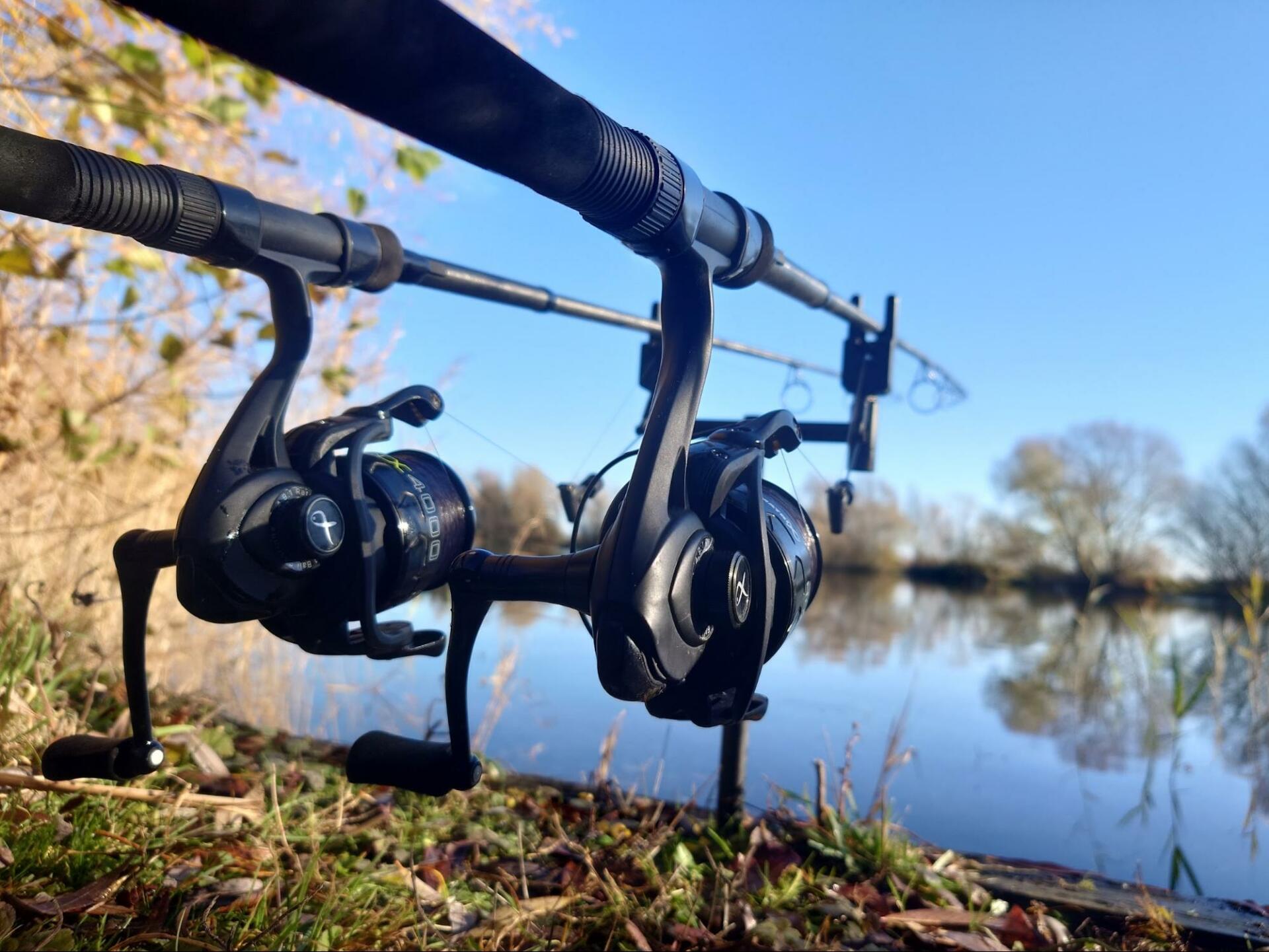
Don’t scale down, keep your tackle strong and up to the job
Rods:
For all of my carp fishing I like to use rods of 3lb test curve. There is a fashion in modern times for heavier and heavier test curves up to 3.75lb and above but this really isn’t necessary, neither for casting nor the size of the fish. Some marketing can be very misleading and, on balanced tackle, you can cast any rod well in excess of 100 yards and, on a 3lb test curve rod, land any carp that swims in British waters.
If I needed to fish beyond this range I either wouldn’t be fishing there or I would use a bait boat to deploy my rigs as I’d then prefer to be able to bait up accurately at the same range. Primarily, though, I will fish well within this range on most venues and I haven’t found a water yet where fish can’t be caught within 50 yards of the bank at any time of year.
I do like to use shorter rods if possible, if only for the convenience and mobility. I will use 10ft long 3lb rods if range and swim choice allow it, moving up to 12ft long and 3lb only if I need marginal reach or I’m casting further than normal distances. Despite the trend of fishing three rods I also prefer to fish two, always finding this much more effective. I have always found that a third rod is fairly much fished as an afterthought and usually cast out with little regard, either on a single hookbait or PVA bag arrangement. I’ll stick to my two rods and hopefully fish them both at as close to 100% efficiency as possible.
Reels:
Moving on to the reels, I’ll fish mini pit style or 5000 size front drag reels on my 10ft rods and step up to 10000 size reels on my 12ft rods. This is where I will always spend the largest proportion of my budget between rods and reels, much preferring to invest in a good clutch system with plenty of quality bearings than in more expensive rods that, whilst slimmer and perhaps a little more aesthetically pleasing, serve very little real world purpose and spend most of the time sat on the rest. This would apply for me across all budgets; for a £50 rod I would target a £100 reel, for a £100 rod a £200 reel, etc. Obviously this is just a guide, but I always recommend a good clutch rather than a good rod to help you land more fish.
Lines:
It’s mono all the way for me. I know braid reel lines have increased in popularity over the years, as well as fluorocarbon options that tend to sink a little faster and are supposedly near invisible underwater, but the trade-offs of both rule them out for my fishing. Braid has no stretch and very little abrasion resistance, similar with fluorocarbon and, as far as invisibility goes, once it’s been in the water a couple of minutes enough algae and detritus has gathered on it to make it as visible as a washing line and no more invisible than regular nylon.
15lb mono, or around 0.40mm diameter, is my line of choice and, just like all my specimen fishing, I like to stick to the tried and tested, no nonsense favourites. Maxima is what’s on the reels at the moment, filling me with enough confidence to trust all my knots and really lean into the carp when I need to, turning them away from snags and through any weed if necessary. Other similar options are the likes of Daiwa Sensor, Gardner Pro Carp, Korda Basix, etc. The choice is yours but good, no nonsense, low-tech lines that never break are what you need.
Getting riggy with it (or not):
Let’s face it, in carp fishing more than any other angling discipline, there is a veritable sea of rigs and you can easily be forgiven for being confused, especially in the colder months when conditions can be tough and your confidence can be at a low, eager to seek out the ‘magic’ edge that might get you a bite. Experience and many seasons will teach you that most of this is entirely unnecessary and, if you don’t yet have that experience under your belt, please take my word for it.
The last metre:
First things first, when fishery rules allow, I like to use a leader, around 3ft long, in order to pin down as much line as possible behind my rig and provide another level of protection from abrasion. I prefer lead-free and tend to buy them ready made as, honestly, my crude fingers have broken enough splicing needles to never want to splice another leader again. Fox Submerge is my usual go to but alternatives are available from many major brands.
You can use lead core or nylon fused leaders if rules allow but I’ve always found these a little stiffer and less natural than lead-free, so I prefer to avoid them. You can also fish your main line straight through if fishery rules dictate this. I’ll attach the leader with a Palomar knot to the mainline, down to a lead clip system and Size 8 flexi-ring swivel. Helicopter rigs are an alternative but I prefer the hooking potential of the lead clip and like to be able to drop the lead, not on every take, but if the fish reaches a snag, and the lead clip is, for me, the most efficient way of doing this and leaves me in direct contact with the fish.
The flexi swivel, as per all of my specimen fishing, is used because I believe the way it rotates in the air is a great way of alleviating tangles, more-so than a fixed or quick change swivel that can have a tendency to fold back on itself.
The rig
I use one rig for all of my winter carp fishing. Yes, you read that right. one rig. As you’ll see when we talk about bait I still like to feed carp in the colder months. At the right time they’re still hungry and, in this spirit, I’m not trying to ‘trick’ them with just a bright single. I’ll use a simple knotless knot rig, fished snowman style, with a 12mm boilie, matching my loose feed, and, just to add a little visual attraction but also matching my loose feed, ill top this with a piece of buoyant artificial sweetcorn. Not only does this match the free offerings, it also takes just a little weight out of the hook and helps make that rig fly into the carps mouth just a little easier.
I tie my rig with uncoated, supple braid, Korda Dark Matter being my current favourite as it has just a little extra weight with it’s heavy woven fibres, helping to pin the rig down just a little more. There is a fashion these days for coated hook links or stiff boom materials. Personally, I still prefer the reaction of a soft link and I also think braid feels no different to a fish than a strand of weed, whereas other materials can feel quite artificial to the underwater environment and, as such, alarming to the carp.
I’ll tie my knotless knot to a Size 6 curve shank, straight pointed hook. This is a go to pattern for me for nearly all my specimen fishing. It’s very aggressive and, once it’s in, it rarely comes out. This might sound like a large hook for such a small bait but remember, these are still big fish that are going to pull back hard and go for the snags. And in winter the snags are all durable ones; branches, roots, debris, none of the reeds and soft weed-beds of summer. As such, a good-sized piece of iron gives you the confidence to lean into the fish if necessary.
I like all my rigs to be about seven inches in length. This gives enough separation from the lead whilst also not allowing the fish to move very far without setting the hook. I’ve experimented with various lengths from three inches up to 18 and experience has taught me that, for me, this is optimal. I tie all my rigs with quite a large loop to attach it to the clip, maybe two inches in length. I’ll attach this loop to loop style and, once tightened, this creates a section just a little stiffer due to it’s thickness and adds just a few more points to the anti-tangle aspect of my fishing.
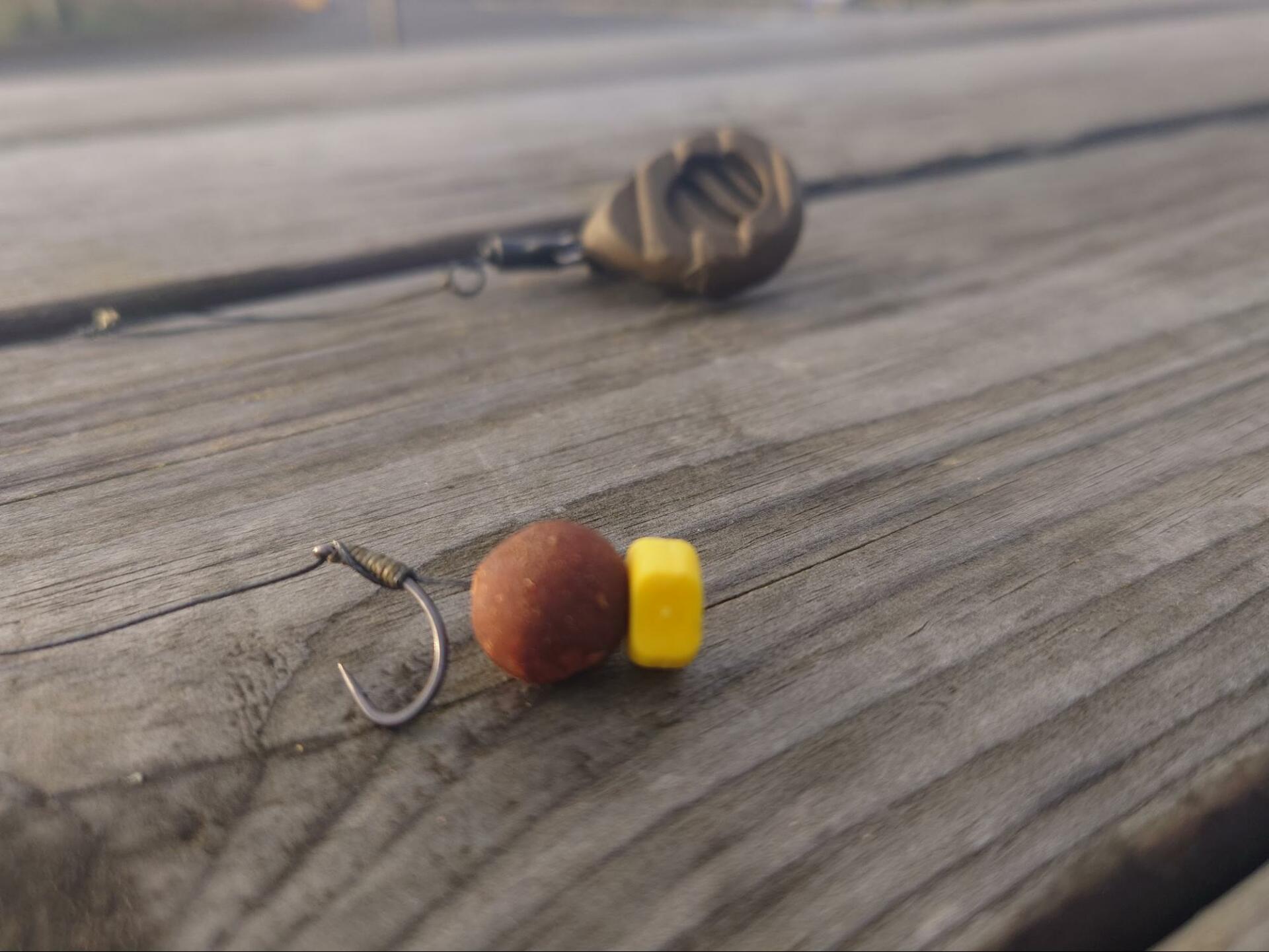
I’ll use a simple knotless knot rig, fished snowman style, with a 12mm boilie
Be confident:
That’s the fishing gear sorted. To sum up, strong and simple. Stick to these principles and you can put any tackle doubts to bed. I have a mantra with all my fishing; tick things off until all that’s left is ‘are the fish there?’ and ‘are they feeding?’. I’m so confident in my tackle, rigs and bait that these aspects don’t occupy my mind any more and I can spend all my time on a session concentrating on answering those questions.
The extras:
With the business end taken care of it’s time for the other stuff. Obviously you’re going to need alarms, bobbins and pods or sticks. These are all personal choice but choose alarms that are reliable in the cold and won’t freeze up in minus conditions. I’ve used Gardner ATTs for years and, honestly, I wouldn’t change them if you paid me. Small, simple, good value and reliable.
Landing net, unhooking mat and sling are obvious and no different to what you would carry all year round. I know it’s winter but it can also pay to take two nets as there’s nothing worse than having one in the net when the other rod shoots off and you have to lower that net cord to scoop another in. You might think I’m crazy talking about this when winter carping but remember at this time of year the feeding spells can be very short and the carp all in the same area so there’s every chance of more than one rod shooting off.
I always carry marker sticks, so that I can clip up to exactly the same spot every time. There’s no point in putting all that time to find the right area if you can’t hit it twice. Along with this I’ll have a marker/spomb rod, usually matching my fishing rods to make it easier to match the range and casting. A selection of spombs goes along with this – never take just one, if you do, you’ll definitely crack off!.
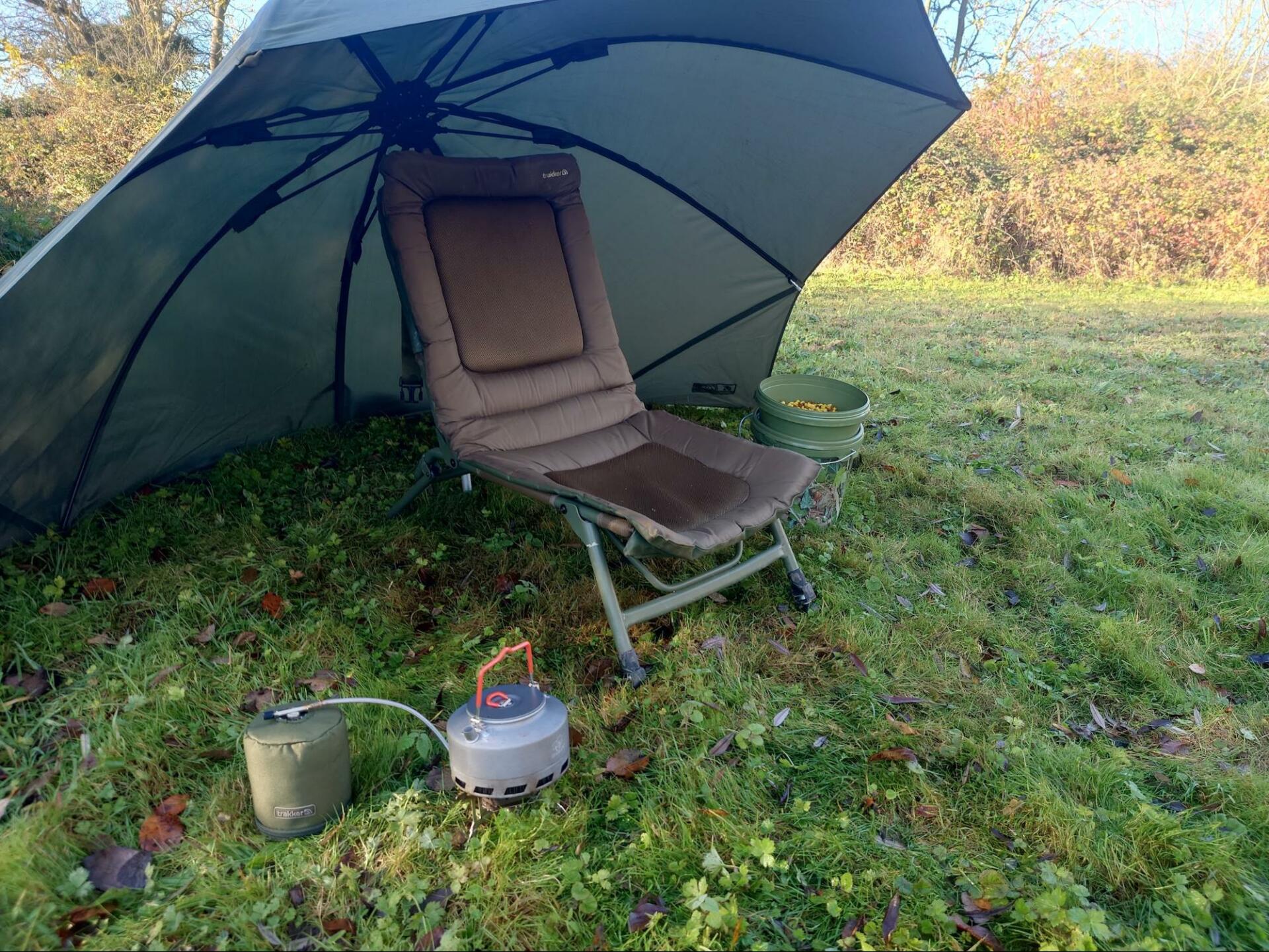
Lightweight and simple can really pay dividends for a day session in the cold. Ready to move at a moments notice
Add to this, and again it’s your choice, your shelter, bed, sleeping bag. For winter you’ll want a good five season bag and perhaps a thermal cover, plus an overwrap for your brolly or bivvy if you’re planning to do some cold overnighters, but it can also pay during the winter months to just do day sessions in the sunshine while the water is at it’s warmest so, in that case, just take a lightweight brolly to protect from the elements and dress accordingly.
In this vein, invest in a good set of winter thermals; a good thermal bib and brace and an overcoat, some decent gloves and a woolly hat. Layer these on top of your normal clothes and you’re set.
Investing in a decent stove and a good kettle or pan is a must. Keeping yourself warm with a nice hot drink and some soup is a key way to keeping your spirits up in cooler conditions and keeping you fishing longer than you would if you were shivering. Organise your kit into an easy to use handy bag and you’ll be ready to brew up a storm.
Add your tackle box loaded with the regulars, including the rig components above and load all this onto a lightweight barrow and we’re ready to go. Remember the aim of the game here is lightweight and mobile, moving on to any signs the carp might give us in the cold so, if you don’t need it, don’t take it. Also, be prepared to up sticks and move if the fish tell you to. It might be tempting to stay put and keep warm but this may very well be the difference between success and failure so remember why you’re there and keep active.
Feed them!
Give ’em some grub:
To sum it up I probably buck the trend here. I’ve always been known as a bait angler, having been of the opinion that nothing attracts and holds fish more than food and I keep this mindset during winter, although in a more measured way. Many anglers will cast out bright singles or a PVA bag and, while they may catch, and many obviously have, it’s not for me and I prefer the confidence of knowing I’m giving the fish a reason to sit up and take notice when dinnertime comes.
Like everything else, though, my bait is simple. For carping in the cold I’ll use exactly three baits: boilies, pellets and sweetcorn. This simple mix provides both food content and visual appeal.
Stick to your guns:
The boilies I will scale down in size from summer, my choice being 12mm The Source, but anything from 10mm to 12mm depending on what size your favourite boilie is available in. On this note, while many anglers will shy away from fishmeals in the colder months, I’m happy to continue. I’ll be feeding in lower quantities and smaller sizes so I’m not concerned with filling the carp up and, to be honest, if it works in the warm it’ll work in the cold and I don’t want to waste the confidence I’ve built up whilst catching through spring, summer and autumn.
Yellow peril:
Sweetcorn needs very little explanation. One of the all time greatest carp catchers, both visual and sweet, it’s a no-brainer in my mix. No need to be posh, just grab a bag of frozen corn from the supermarket and let it defrost before you get out. Remember, temperatures may well be hovering around or below zero so don’t rely on defrosting it once you’re there.
When it comes to pellets, there are tons on the market but my current favourite has to be Dynamite F1 sweet. These are low feed, break down well even in cold water and leak a fantastic yellow cloud that complements the sweetcorn perfectly. I’ll use these in 4mm size, meaning they’ll break down in good time and also provide plenty of particles to keep the carp grubbing on my spot for longer.
Mixing it up:
At the start of the session I’ll grab a bait bucket and mix these together. For a day session I’ll probably add half a kilo of each, breaking perhaps half of the boilies between my fingers to add some odd shapes and sizes and help them break down and leak flavour a little quicker. Unlike many anglers I don’t often add any additional liquids. The juice from the sweetcorn is enough to coat the baits and just start the process of breaking down the pellets, meaning you’re going to be casting out a beautiful sloppy attractive mix from the off.
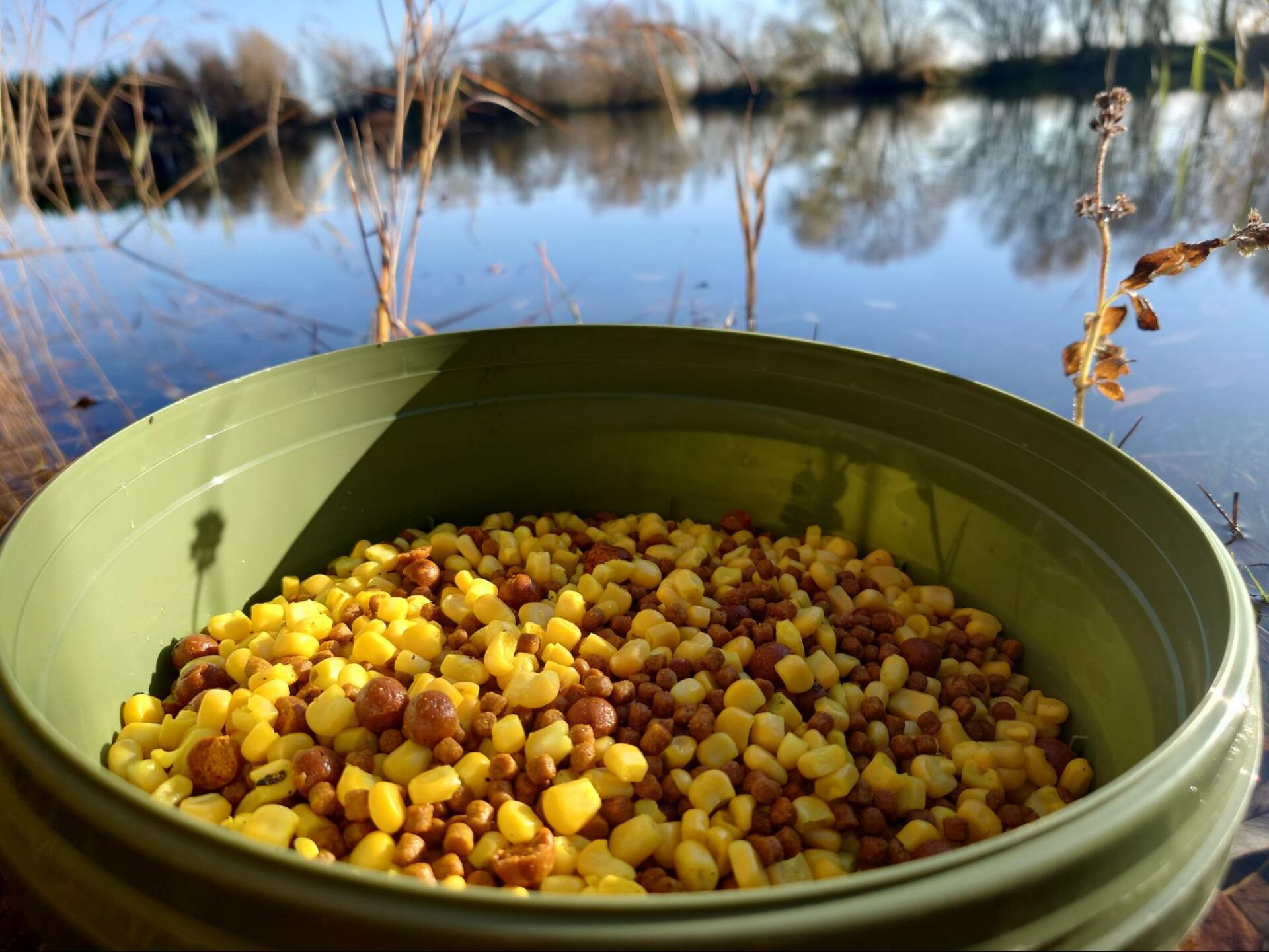
12mm boilies, pellets and sweetcorn; the perfect recipe for winter carp
Catch them
Now that we know what we’re doing and how we’re doing it, it’s time to put it into practice. This year I’m fishing a syndicate lake close to me that has fantastic form throughout the colder months and a good head of fish to over 30lbs, including a great stock of doubles and 20s. Exactly what the doctor ordered and fits all the criteria we’re looking for.
I know the lake well but I’ve also had a few good walks round in the last few weeks and seen signs of fish in one particular end of the lake so this is where I’m headed.
Get fishing:
Once I arrive at the swim, the important part for me is first to get my bait mixed up, get some food into the lake and get the rods out. Although it’s cold – three degree air temperature on this particular session – at this point I’m still warm from the car and I can get fishing before the fingers start to chill. Once we’re set up I can get the kettle on.
I’m fishing one spot today at just over 30 yards, where investigation has told me there’s a clear gravel bar at a depth of about 8ft. I’ll wrap my spomb rod and both my fishing rods up using the marker sticks and then introduce some bait. While the range is dictated by the clip on your reel, always use a far bank marker to get your line right. Today I’m using the tallest tree on the opposite bank and fishing either side of it. I’m fishing two rods so, as an introduction, I’ll put out four medium spombs of bait roughly split between the two spots. It’s only a short afternoon session so we don’t want to go crazy and this will be plenty of particles to offer some attraction and entice a bite.
Bait delivered, it’s time to deploy the rigs. I always like to nick a small PVA mesh bag of pellets, the same as our mix, onto the hook. This aids in straightening out the rig in flight to prevent tangles and also provides an enticing extra pile of attractive freebies around the hookbait. Once the rigs are in position and I’m confident of a clean drop I’ll attach the bobbins, fishing a tight line. This can be very useful at this time of year as a carp can give you ‘liners’ much easier, giving you a great indication that you’re in the right place.
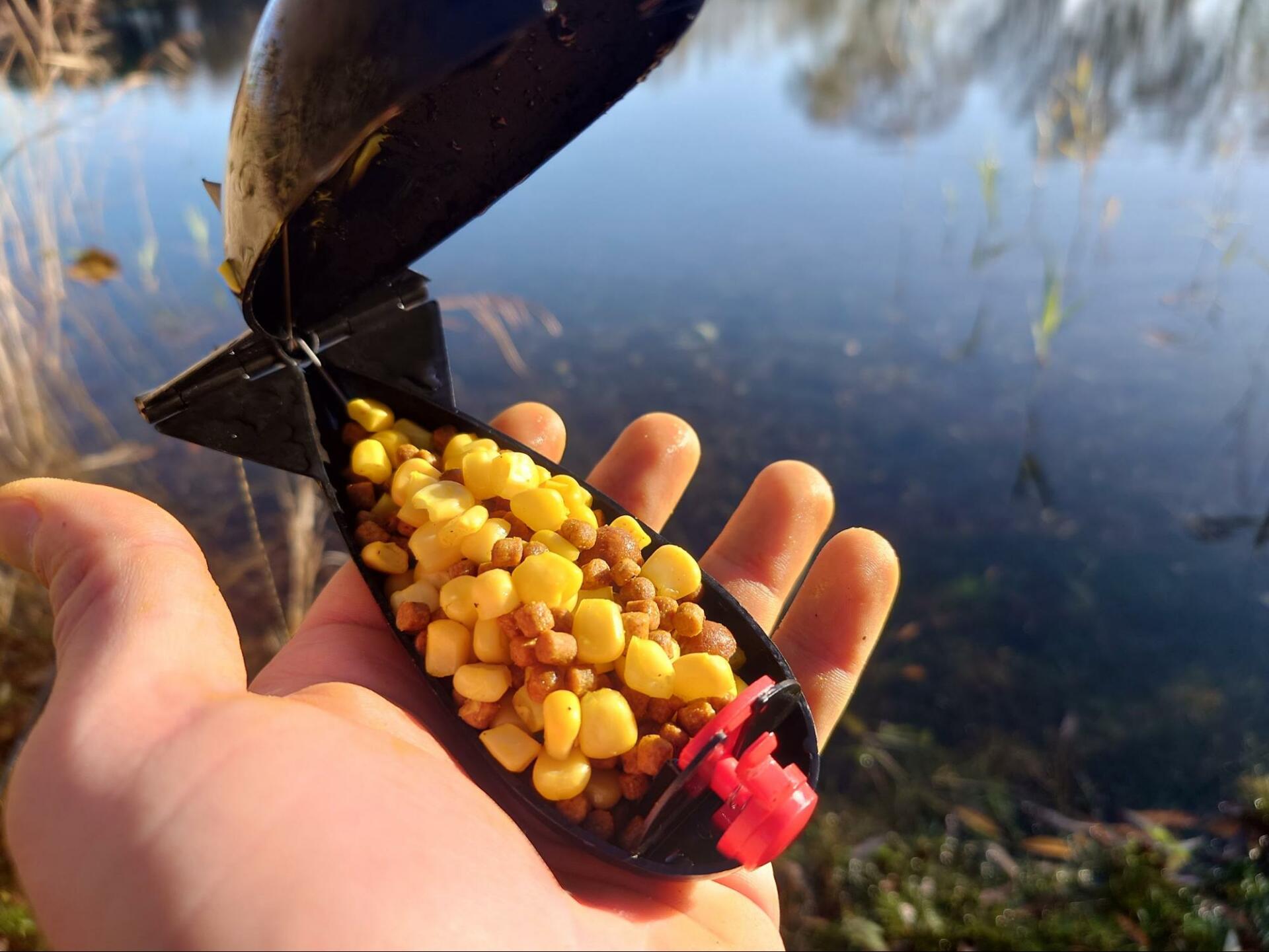
A few medium spombs are enough to entice a bite
Settle in – but stay active:
Once in place, get the stove fired up and settle in. On my short day sessions I prefer to use a very small, lightweight day shelter rather than a brolly or bivvy system. It’s enough to protect from the elements but incredibly easy to set up and pack away. It pays to keep casting and keep active at this time of year and I’ll tie up some extra PVA bags while I’m waiting. I’ll then cast maybe every 60 to 90 minutes, depending on the results.
Time for a bite:
No matter the time of year, last light is always a reliable bite time, and today is no different. After several hours without a sign comes the first liner, followed by a couple more and then a big drop back on the right hand rod. The line then pulling tight and the tip arching over, it’s definitely fish on and time to strike. Lift into the fish and apply steady pressure. I always like to play fish fairly hard and this is no exception. Kiting towards the margin to the right, it’s necessary to lean into the fish and utilise the power in the rod to steer it away. Having avoided this and got the carp under control, it’s a swift and steady fight before a bristling carp is sitting in my net and its objective achieved! It’s not a monster but, for a session lasting only three hours, a fantastic reward nonetheless.
After a short rest in the net it’s onto the mat for a quick weigh and a victory shot. The carp is bristling and lively. After a few minutes, though, it’s back into the net, a quick rest in the margins and then the carp is kicking it’s way back into the lake, ready for another day. As I’m packing away I notice that there’s ice on my bags and my phone tells me the temperature ‘feels like’ minus one. This makes the result all the more special.
Packing away with cold, wet fingers is never pleasant but, when it’s just after a winter carp, for some reason you always feel a little warmer. Everything away, it’s back to the car and off home after a great result. And we’ve not even been out long enough for the house to get cold!
Conclusion
The colder months certainly present their challenges, with the chance of wind, rain, frosts and snows. If the lake is frozen over the game is up but, on the other hand, the rewards are there to be had. Fish are reaching peak weights, the colours are amazing, the lakes are quieter and, let’s face it, catching in tough conditions is more rewarding! Kit yourself out right and hopefully you too can reap the rewards of carrying on carping through the colder months. Get the brew on, I’ll be round with a cup…
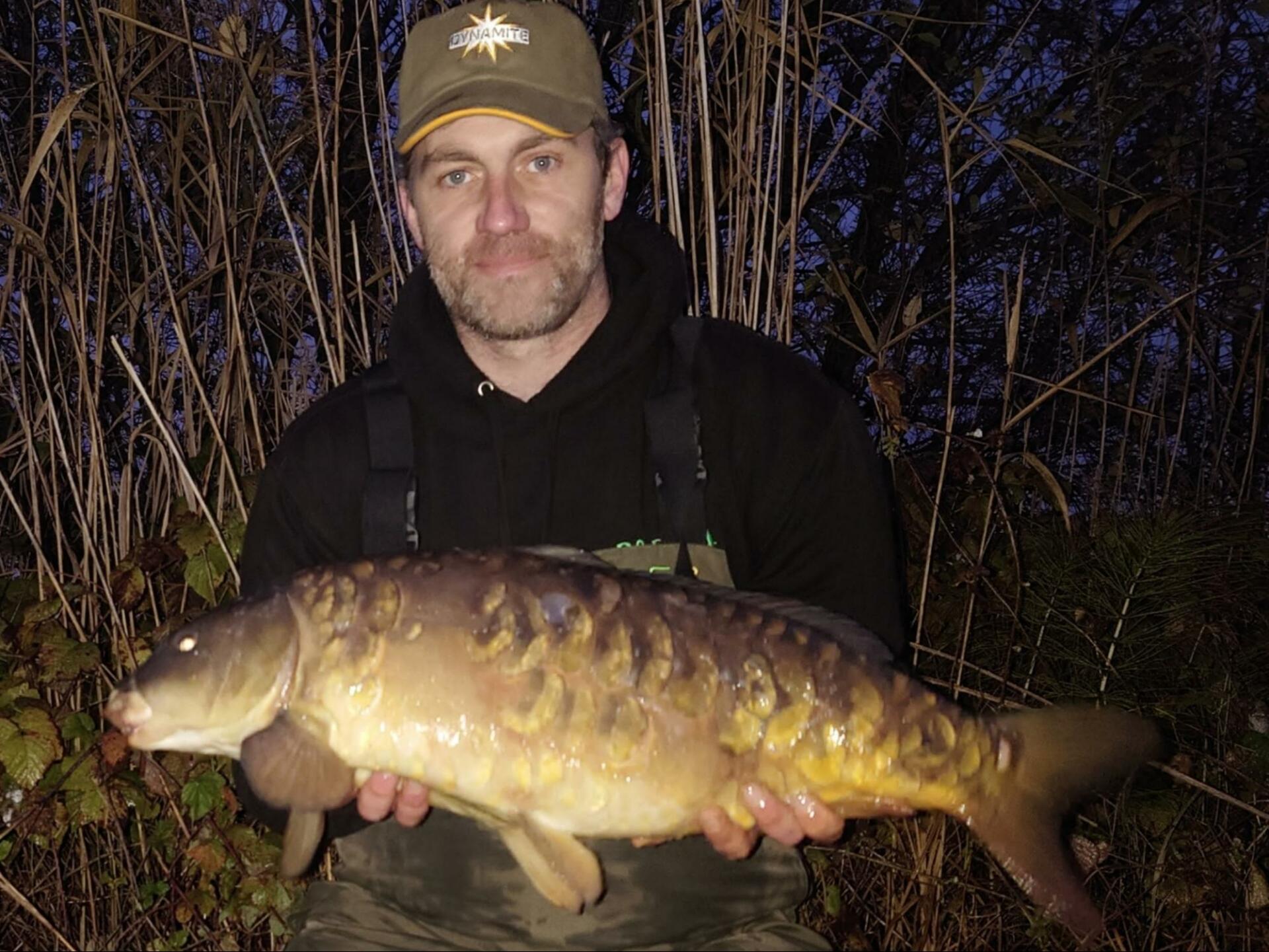
A winter double caught with ice on the ground in a 3 hour session. It pays to do your homework and be in the right place
FAQ
Where should I go to catch carp in the cold?
Pick venues that are shallow enough to warm up in the winter sun and lakes that hold a reasonably high stock. Winter isn’t about the big targets, they’re hard enough at any time of year. We’re after bites, having some fun and being able to extend our carping beyond the time we might usually pack the gear away for the season. It’s also an idea to pick somewhere reasonably local to you. We’ve all travelled a long way for a ticket when we’re hunting a target fish but in winter there’s always a chance of disappointment no matter how hard you try and this is going to be easier to take if you’re not far from home.
The rig game
As you’ve read, I literally stick to one rig over winter. You might think there needs to be an alternative or a backup but it’s not necessary. I’ve always said there’s no such thing as an unfishable lake or a lake with no ‘spots’, it’s simply a matter of finding them. With the winter die back this only becomes more true. As such I don’t think there’s a need for any of the ‘cast anywhere’ rigs such as the chod or the Ronnie on a helicopter rig or similar.
To bait, or not to bait. That is the question
Bait. I hope I’ve made this clear enough already but there’s no substitute for bait. No matter the temperature fish are going to eat and search out food at some point and, when they do, I’m not going to rely on them trying to find a single bait across a huge lake bed. I still want to have something there to keep them in my area for as long as possible. Just be a little more conservative and thoughtful than you might be in the warmer months.
Should I stay in one area and draw the fish in or keep on the move?
To be honest this can be both or neither. When winter first hits it’s definitely going to pay to stay mobile and search out the lake for those fish holding areas where the majority of the carp might be shoaled up. Hopefully as the season progresses you might well identify some regular spots you have confidence in and, at this point, you can plan longer sessions and take all the necessary gear to do so without having to worry about moving. Of course when conditions are different this might change so it’s good to be able to keep an open mind and not camp in the same area for months, ignoring the rest of the lake just because you’ve identified one or two winning spots.
What do I need to take to catch carp in the cold?
Keep all the basic kit the same as you would at any time and just add anything you need to keep you warm, dry and comfortable. Good quality thermal clothing, warm footwear and a stove with plenty of gas. I’m happy to keep fishing for as long as it takes as long as I’ve got a warm cuppa available. If you’re fishing nights do not under any circumstances seal your bivvy up with a stove or bivvy heater inside. Carbon monoxide poisoning is a killer, as is a flammable shelter. Sadly you’ll be able to read every year about someone who made that mistake. If you invest properly in your clothing , shelter and sleeping gear you’ll be plenty comfortable enough and, honestly, if it’s too cold and you’re miserable, go home rather than take the risk. There’s always another day.
How cold is too cold?
When the lake is entirely frozen over. This is the only real answer to that question and the only time I won’t at least consider carp fishing. And I’ll admit that I have stared at lakes and considered breaking the ice to have a go anyway! When the lake starts to defrost, head down and fish the end that melts first. This is obviously the warmest and can really throw up a few surprises. I’ve got to be honest, there aren’t many things better in fishing than a snow carp. It makes for a fantastic picture and, long after you’ve forgotten how cold you were, you’ll have fantastic memories and an immense amount of pride.
Similar articles
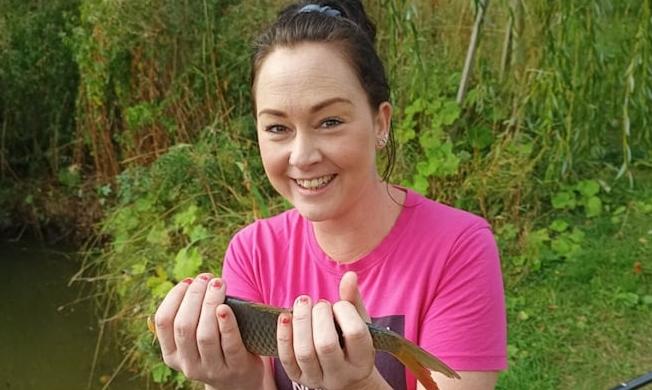
Angling Trust survey – the benefits of going fishing
In support of the current ‘Stress Awareness Month’, the Angling Trust is asking anglers to take a brief survey to highlight the benefits of going fishing. The survey closes on Sunday at midnight.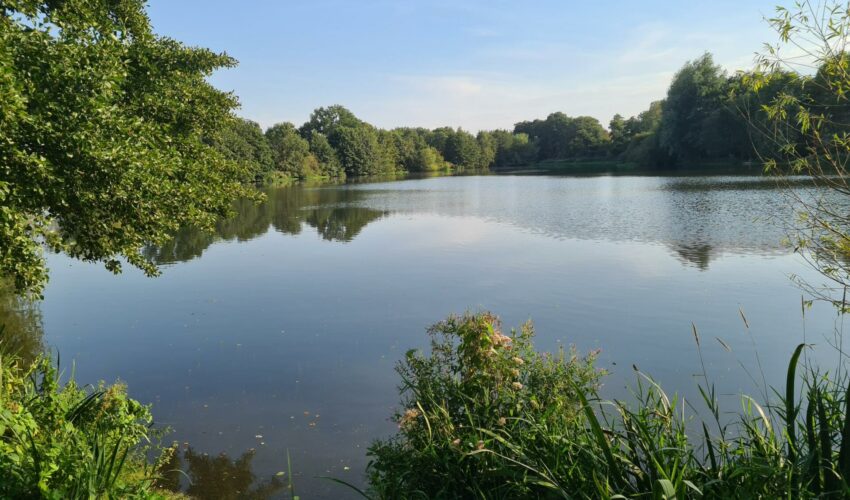
Our guide to fishing this spring (2024)
With the worst of the weather over (we hope!) and with spring finally here, it’s time to clean out that tackle box and get on the bank for some spring time fishing.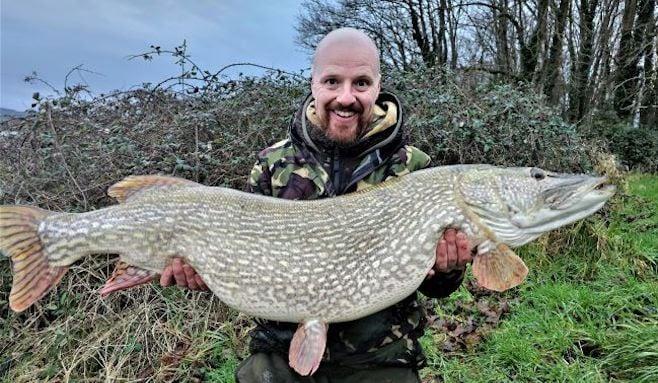
Chew Valley pike is new record
A 47lb 5oz pike taken by Chew Valley Lake angler Lloyd Watson on February 13 has been awarded the new record for a British rod caught pike.
Guide to buying second hand fishing tackle
This seasonal cold and wet weather can cause many of us to stay at home rather than go fishing, but the yearning within to do something fishy can often be satisfied by buying more kit.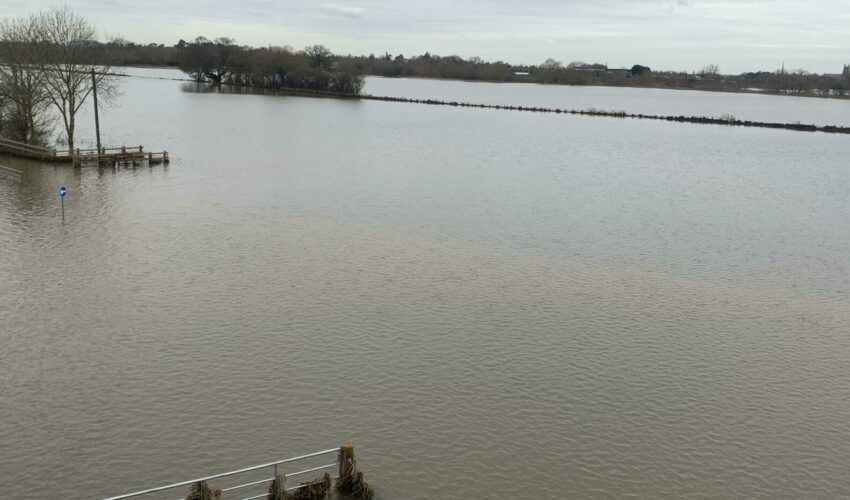
What happens to fish in severe floods?
The recent extreme floods will have led many anglers to wonder what lasting effects such dramatic events have on fish. Fishery Management Consultant Dr Bruno Broughton explains what goes on.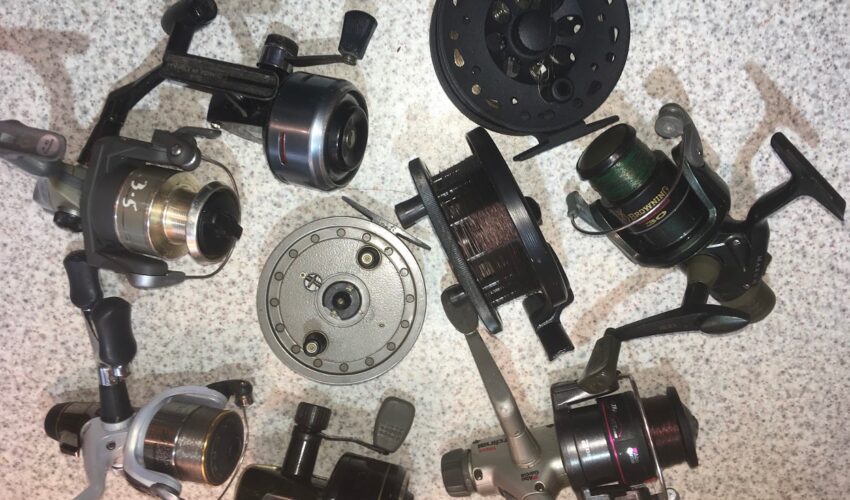
Coarse fishing reels explained
If you’re new to fishing or just thinking about purchasing a new fishing reel, Chris Smith delves into the detail about his coarse fishing reels and explains the benefits and features of the different types.Search by Region or County
Find new places to go fishing in your local area or county by choosing your destination below









Comments